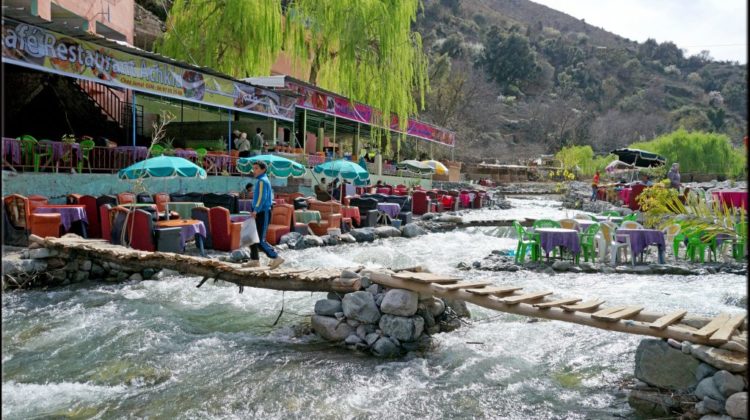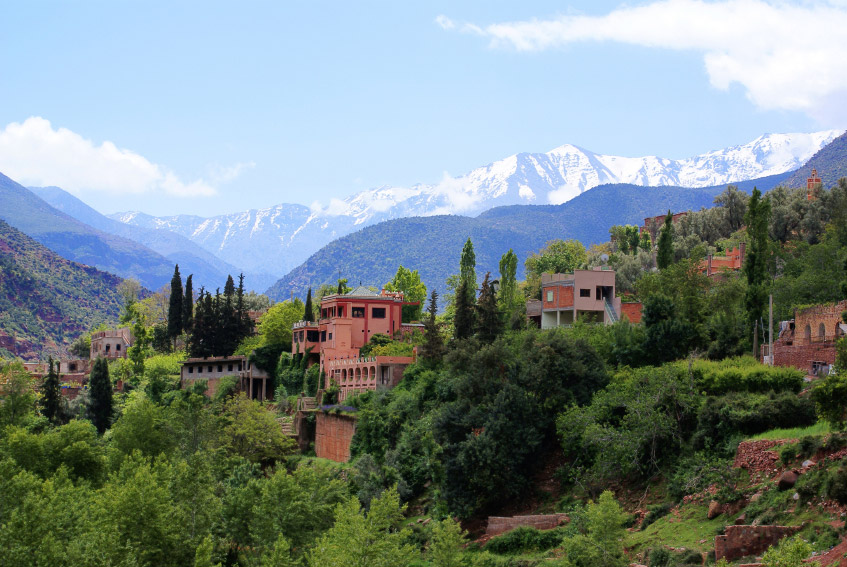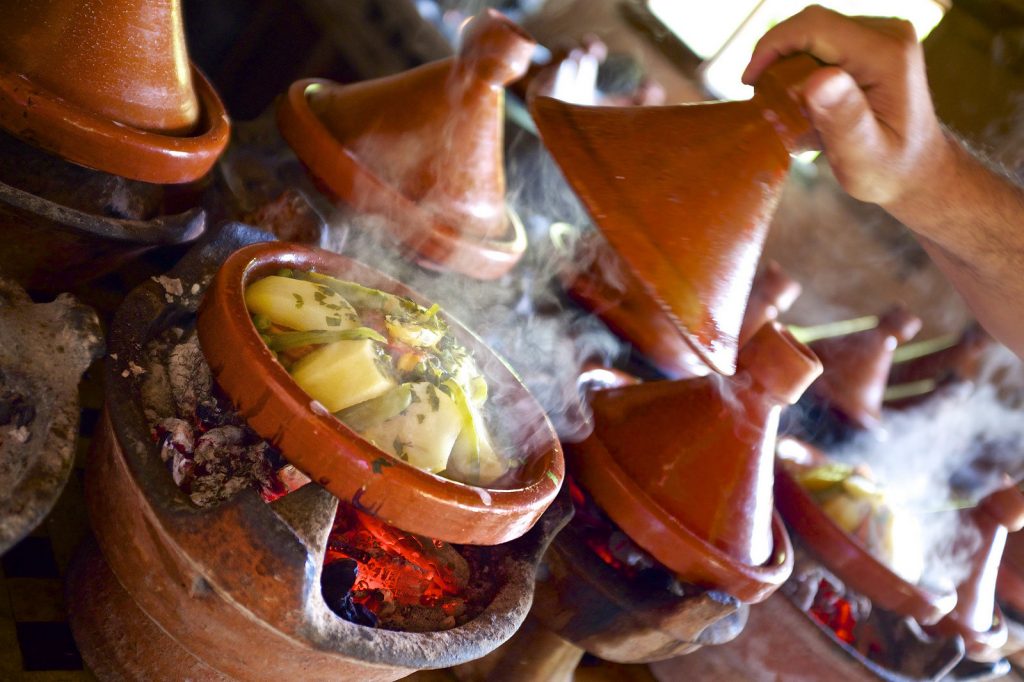
Ourika Valley is a popular destination in Morocco, particularly for those seeking an intriguing day trip from Marrakech.
This stunning valley offers tranquility and slightly milder temperatures than Marrakech, attracting both tourists and locals.
The Ourika River flows through the valley, surrounded by villages inhabited by Berber tribes. Behind the village of Setti Fatma, you’ll find a captivating collection of waterfalls, a prominent highlight of the valley. These refreshing waterfalls create a mesmerizing experience.
In this article, we will explore the attractions of Ourika Valley and provide helpful tips to ensure you make the most of your visit to this breathtaking region.
Table of Contents
Where Is Ourika Valley?
Ourika Valley is situated southeast of Marrakech, nestled in the foothills of the snow-capped Western High Atlas Mountains.
It is a fascinating region of Morocco, offering opportunities for mountain hiking, exploration of unique Berber villages, and even winter snow skiing.
The distance between Marrakech and Ourika Valley ranges from 30 to 40 km, with a travel time of approximately 40 to 50 minutes.
One remarkable aspect of the Western High Atlas is that it is the exclusive habitat of the Barbary macaque, an endangered primate. Spotting a Barbary macaque during your visit would be a fortunate encounter indeed!
What to Do in Ourika Valley
High on the list of things to do in Ourika Valley is to visit the famous waterfalls. The path to the waterfalls begins behind the colorful restaurants in Setti Fatma, one of the villages in the valley.
Setti Fatma is located in a canyon at the southern end of the Ourika Valley.
The village has become popular for tourists who want to have lunch by the river or visit the seven waterfalls.
During your hike to see the waterfalls, you will probably not be very impressed with the first waterfall. But keep going!
As you continue your hike up the mountain, each waterfall seems to be more beautiful than the last.
The path consists of areas shaded by trees as well as some areas that are less shaded.
Don’t forget to look up at the mountains high above you: you might catch a glimpse of hikers making their way along the paths of the nearby mountains.
Setti Fatma is also a popular place to visit in August: at this time a colorful four day market and fair are held each year.
There are many Berber villages in this area: tourists enjoy visiting these villages with their interesting history.
The Berbers have lived in North Africa for 5,000 years. During the Arab invasion in the 7th century the Berbers took refuge high in the Atlas Mountains.
Today most Berbers are Muslims, but they have retained the Berber languages in their villages where you can see some of their art and hear their music.
Places to Stay
Ourika Valley offers a variety of places to stay: there are hotels, bed and breakfasts, guesthouses, and apartments.
One of the most popular places to stay is the Auberge le Maquis. It is an eight room family style accommodation that is popular with visitors, hikers, and bikers.
The Auberge provides meals for its guests and can help arrange tours to special places like the petroglyphs on the Yaggour plateau, and mule treks for children.

Some of the other places to stay in the Ourika Valley include the Ourika House, Riad Cle de Sol, Dar Ikalimo Ourika, Villa La Zitoune, and many more. Some of the accommodations allow pets; some have restaurants; and some have wifi.
Where to Eat
In Setti Fatma you’ll be able to enjoy authentic Moroccan cuisine at the Cafe-Restaurant Azrrabzou in a setting of almond trees.
For a unique dining experience try the Kasbah Bab Ourika. This hotel and restaurant sit on a hilltop looking down towards the valley with its olive, lemon, and orange groves, and the river.
There are also breathtaking views of the mountains. Many of the dishes are prepared with locally grown and organic ingredients.

Other restaurants to try are Chez Juju with its French menu; Restaurant-Hotal Azilal which serves Moroccan dishes; and Timichi which also serves Moroccan cuisine.
How to Get There to Ourika Valley
There are several ways to reach the Ourika Valley from Marrakech. Many visitors choose guided tours departing in the morning and returning in the afternoon or evening.
These tours typically include hotel pickup, drop-off, and an English-speaking guide. Costs range from $25 to $50 per person, depending on the tour company and type.
Alternatively, you can take local “buses,” which are actually minivans departing from Marrakech’s main square. The ride can be bumpy and uncomfortable, but it’s a more affordable option than guided tours. Minibuses are readily available at Setti Fatma for the return to Marrakech.
For greater independence, renting a car is an option to explore the valley at your own pace. However, driving in Morocco can be challenging due to narrow and winding roads. It’s advisable to have a GPS for navigation assistance.
Lastly, hiring a taxi for the entire day typically costs around $80 – $100 with negotiation skills. Keep in mind that most taxi drivers have limited English proficiency, and the taxis may be old with unpredictable driving.
Getting Around
For those visitors who chose to take an organized tour of the Ourika Valley from Marrakech, you will not need to worry about how to get around.
For the more adventurous, the Ourika Valley is a hiker’s paradise.
There are many places to explore such as the river and the waterfalls, the Berber villages perched on the hillsides, and many other places. All of these places are special, but it’s best to be in good physical shape and wear good walking shoes.
When to Go
One of the best times to visit the Ourika Valley is in the early spring, between February and April. April can be rainy, but at this time of the year the cherry orchards and almond orchards are in bloom: these are beautiful and are not to missed!
At the same time there are many pretty wildflowers that can only be seen at this time of the year.
Summer is hot in Marrakech and a visit to Ourika Valley will give you a break from this heat. July is the hottest month and also the sunniest month.
However, the valley can seem crowded with visitors and locals during the summer.
The coldest month is January and this is a popular time for snow skiers to come down from Marrakech and enjoy some great snow skiing.
Don’t miss this jewel set in the mountains of Morocco!